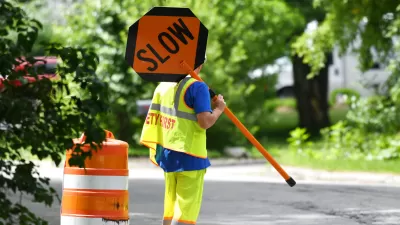People of color are finding it more and more difficult to secure housing in New Orleans, as new and old forms of housing discrimination -- and overt racism -- are conspiring to keep them out.
"Throughout the [New Orleans] region, historically white suburbs, as well as one African-American neighborhood, have been tightening the housing noose by passing laws that restrict, limit or simply ban the building--and even renting--of homes that traditionally benefit poor and working-class people of color. Couched in the banal language of zoning and tax credits, density and permissive-use permits, these efforts often pass for legal and rarely raise eyebrows outside the small community of fair-housing monitors. But taken together--and accompanied, as they so often are, by individual acts of flagrant racism--they represent one of the most brazen and sweeping cases of housing discrimination in recent history.
Among the first and most aggressive to take action was St. Bernard Parish, 84 percent white before the storm and working to rebuild itself that way. Barely two months into the recovery, St. Bernard's governing council passed a twelve-month ban on 'the re-establishment and development' of multifamily dwellings, stalling the reconstruction of affordable housing complexes. But the council truly distinguished itself in September 2006 when it passed an ordinance that, critics said, danced about as close to legalized segregation as perhaps any law since 1972, the year Louisiana finally deleted its Jim Crow laws. Known as the 'blood relative ordinance,' this law prohibited homeowners from renting their properties to anyone who was not a bona fide blood relation without first obtaining a permit--a loaded concept anywhere, but particularly in St. Bernard, where the white majority owned 93 percent of the pre-storm housing.
The post-Katrina orgy of ordinances and moratoriums falls squarely within [the] tradition [of housing discrimination]. But there are some essential differences, beginning with the fact that the post-storm frenzy is fundamentally more: more overt, more excessive, more widespread."
FULL STORY: New Orleans Redraws its Color Line

Trump Administration Could Effectively End Housing Voucher Program
Federal officials are eyeing major cuts to the Section 8 program that helps millions of low-income households pay rent.

Planetizen Federal Action Tracker
A weekly monitor of how Trump’s orders and actions are impacting planners and planning in America.

Ken Jennings Launches Transit Web Series
The Jeopardy champ wants you to ride public transit.

Washington Legislature Passes Rent Increase Cap
A bill that caps rent increases at 7 percent plus inflation is headed to the governor’s desk.

From Planning to Action: How LA County Is Rethinking Climate Resilience
Chief Sustainability Officer Rita Kampalath outlines the County’s shift from planning to implementation in its climate resilience efforts, emphasizing cross-departmental coordination, updated recovery strategies, and the need for flexible funding.

New Mexico Aging Department Commits to Helping Seniors Age ‘In Place’ and ‘Autonomously’ in New Draft Plan
As New Mexico’s population of seniors continues to grow, the state’s aging department is proposing expanded initiatives to help seniors maintain their autonomy while also supporting family caregivers.
Urban Design for Planners 1: Software Tools
This six-course series explores essential urban design concepts using open source software and equips planners with the tools they need to participate fully in the urban design process.
Planning for Universal Design
Learn the tools for implementing Universal Design in planning regulations.
Heyer Gruel & Associates PA
Ada County Highway District
Institute for Housing and Urban Development Studies (IHS)
City of Grandview
Harvard GSD Executive Education
Toledo-Lucas County Plan Commissions
Salt Lake City
NYU Wagner Graduate School of Public Service





























